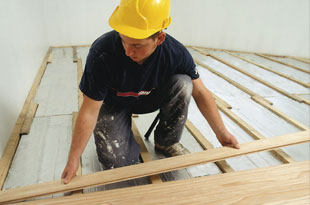 There have been many discussions regarding the possible causes of the so-called Performance Gap between as-designed and as-built building performance, with many aspects of the construction industry being targeted as potential causes of the problem. Rigid board insulation manufacturers have taken steps to assist the industry in remedying potential installation issues on site and deliver a better building performance.
There have been many discussions regarding the possible causes of the so-called Performance Gap between as-designed and as-built building performance, with many aspects of the construction industry being targeted as potential causes of the problem. Rigid board insulation manufacturers have taken steps to assist the industry in remedying potential installation issues on site and deliver a better building performance.
The Zero Carbon Hub recognised poor installation of fabric as one of the key priorities for action in its influential 2014 report Closing the Gap Between As-Built Design and Performance. Every sector of the industry has to focus on tackling the Performance Gap, and manufacturers can play their part by providing products which are easier to use and require less specialist skills in order to achieve a robust result on site.
Examples of poor installation practice have been identified as a part of the problem, such as gaps being left between rigid board insulation installed in cavity walls which can obviously cause heat loss, hamper performance against moisture penetration and lead to condensation. In addition poor junction detailing between walls and floors has been identified as a cause of thermal bridging further hampering as-built performance, which could be avoided by using a whole-house approach.
The British Rigid Urethane Foam Manufacturers Association (BRUFMA) is taking a leading role within the industry in an effort to address the problems and build confidence in the quality of new build housing. Members of the association, which contains all major PIR manufacturers, have been investing in new solutions which can help to remedy some of the issues on site.
A move has been underway recently within the PIR insulation industry towards ‘full fill’ cavity wall insulation solutions as the ultimate robust option which vastly reduces any margin for incorrect installation on site. And importantly, it has been done without architects and contractors having to significantly change the design of walls, which could impact on plot sizes or regulation compliance. Some manufacturers have gone down the route of introducing jointed or rebated boards as a way to help installers provide a tight jigsaw-like lock between boards on site, and provide the ideal continuity of insulation required.
Tackling the Performance Gap is not the only reason to look at full fill cavity wall insulation using a rigid board solution, it is also a way for housebuilders to achieve a high performing wall which enables them to reach the notional building 0.18 U-value within SAP.
Manufacturers are embracing system-based robust approaches to providing insulated systems to meet the performance needs, whether they use ancillary products such as tapes and membranes or inherently provide a continuous and robust solution to help close the Gap.
BRUFMA members are committed to addressing the Performance Gap by providing good quality products backed up by technical advice, education and designs which enable installers to ‘fit and forget’ knowing they have done a good job. This is crucial going forward in meeting what is one of the biggest challenges currently facing the industry.
Mel Price, Assistant Chief Executive, BRUFMA

